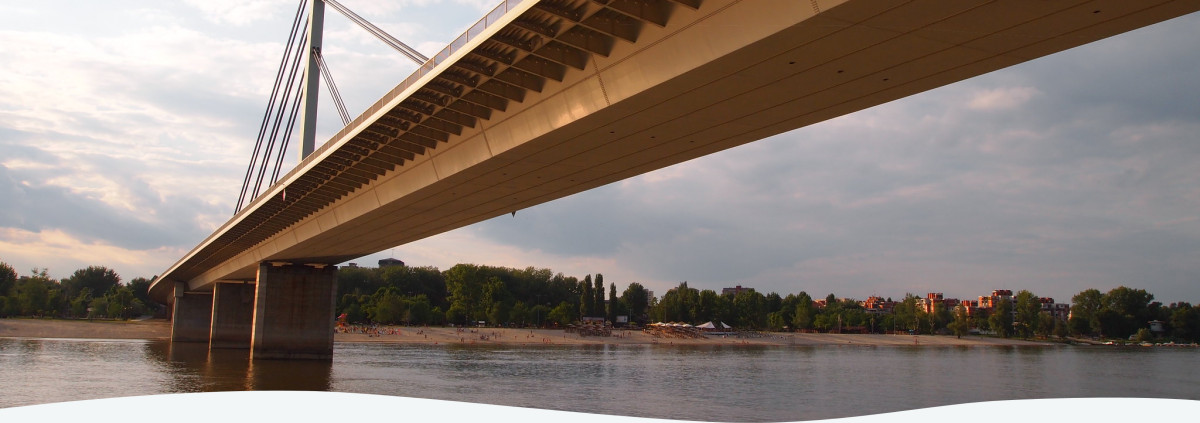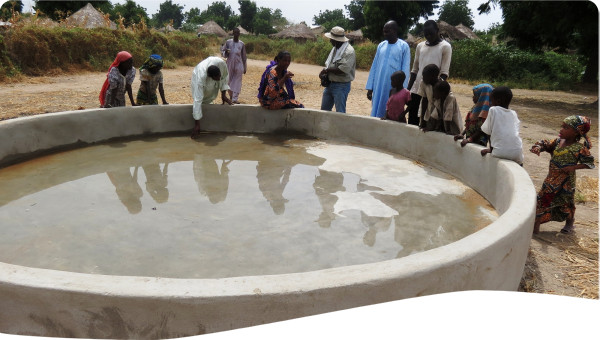The Danube region is characterised by long-term cooperation. One of the most important agreements is the Danube River Protection Convention, aiming to achieve sustainable and equitable water management. To achieve this, the Danubian countries have taken appropriate legal, administrative and technical measures to at least maintain and improve the ecological and water quality conditions. The main lesson learnt is that strong cooperation among all the involved parties is required.
The Danube River basin shared by 18 countries has a long-standing history of international environmental cooperation. The first institutional framework for adopting common programmes and measures to protect water quality was established under the Bucharest Declaration in 1985. The Declaration had as one of its objectives to observe the development of water quality for the Danube river. In order to comply with this objective, a monitoring programme consisting of 11 cross-sections in upstream and downstream along the Danube River border crossings were established.
The further development of the international strategy for the protection of the water resources in the Danube catchment area was based on the UNECE Convention on the Protection and Use of Transboundary Waters (Helsinki Convention). More so, the Convention on the Protection and Sustainable Use of the Danube River known as the Danube River Protection Convention (DRPC) was signed in June 1994 in Sofia.
The DRPC entered into force in October 1998 and became the overall legal instrument for transboundary water management at Danube basin-wide level. In addition, the International Commission for the Protection of the Danube River (ICPDR) was legally established as the main decision making body under the DRPC. One of the main objectives of the DRPC is to achieve sustainable and equitable water management and this includes conservation, improvement and the rational use of surface and groundwater.
In order to accomplish the objectives, the Danubian countries have taken appropriate legal, administrative and technical measures to at least maintain and improve the ecological and water quality conditions of the Danube River and water resources in its entire catchment area.
The first steps towards joint water quality monitoring network in Danube River Basin (DRB) were taken when governments of the Danube countries signed the Bucharest Declaration in 1995. The monitoring network used for the purposes of the Declaration consisted of eleven monitoring locations along the Danube River itself where the river formed or crossed the border between the countries.
In 1991 the Danube countries started preparations for the Convention on Cooperation for the Protection and sustainable use of the Danube River (DRPC), which was signed in 1994 in Sofia. The EU supported the Environmental Programme for the Danube River Basin (EPDRB) and a lead Task Force also started in 1991 with the main objective of strengthening the operational basis for environmental management in the DRB.
The Contracting Parties committed to establish a joint monitoring system, agreed upon monitoring points sources of pollution, river quality characteristics and pollution parameters regularly to be evaluated for the Danube River and its main tributaries. A concern was also underlined regarding typical emissions of pollutants discharged within the respective catchment areas. In addition, the Parties periodically were to assess the quality conditions of Danube River and the progress made by their measures taken aiming at the prevention, control and reduction of transboundary impacts.
The Trans-National Monitoring Network of the Danube River Basin (TNMN) was designed in 1993 (under the project “Monitoring, Laboratory Analysis and Information Management for the Danube River Basin”).
The main outcome in the frame of TNMN is the basin-wide assessment of water quality based on a homogenous and comprehensive data set, annually presented in the Danube Yearbooks, focused on the following aspects:
- Presentation of results of the basic statistical processing
- Identification of water quality changes along the Danube River
- Presentation of profile and trend assessments in water quality
- Assessment of dangerous substances content in accordance to EQS established or proposed for use in EU
- Assessment of selected pollutants loads.
In addition to the already mentioned annual report (Yearbooks), there is also a Five-year Report on Water Quality in Danube River Basin Based on TransNational Mentoring Network prepared in 2003. The other uses of TNMN data were the sub-stations (according to EU WFD Article 5 report “Characterization of pressures and impacts at the basin wide level). The special relevant chapters of “Danube River Basin Management Plan” where the status of water bodies were presented including the impacts and their causes and results of this assessment, the relevant measures for impacts mitigation among others.
Since its operation, TNMN is supported by a basin-wide network of National Reference Laboratories. The TNMN coordinates the entire monitoring activity at national levels and ensures the quality of the results of the analyses. However, the harmonization of working methods and improvement of data compatibility is still an ongoing process.
Improvement of TNMN has to be strongly connected to continuous implementation of WFD. Other EU water related directives also entered in force in 2000 and after Danube countries agreed on their joint implementation in the river basin.
Strong cooperation among all the involved parties is required. The results of the network implementation and operating activities are not a self-standing activity: the TNMN data can be used in identification of possible weak points in the monitoring programme.
 Case studies
Case studies

